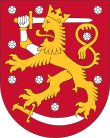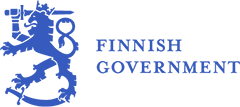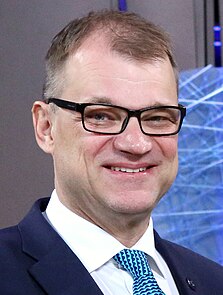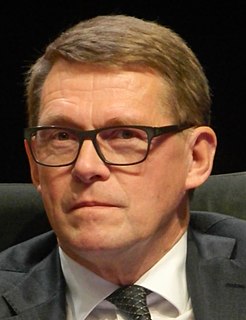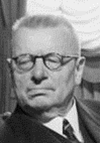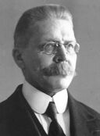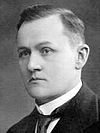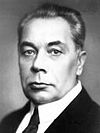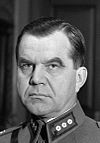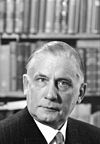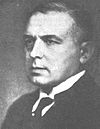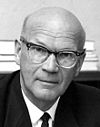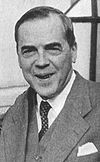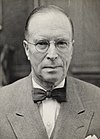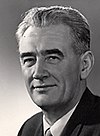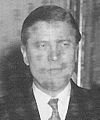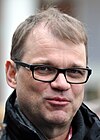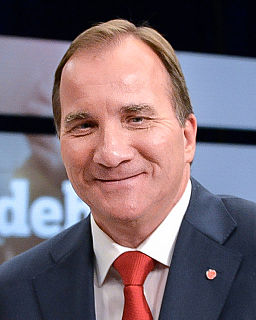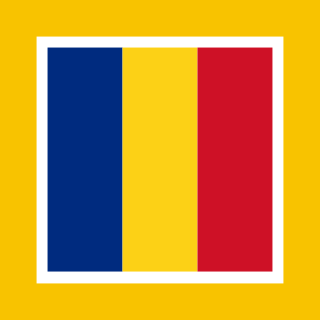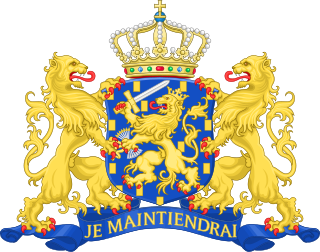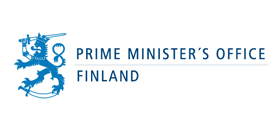| № | | Prime Minister | Took office | Left office | Time in office | Party | Election | Coalition | Cabinet |
|---|
| 1 | | Svinhuvud, Per Evind Pehr Evind Svinhufvud
(1861–1944) | 27 November 1917 | 27 May 1918 | 181 days | | Young Finnish | 1917 | SP–NSP–ML–RKP
(Minority) | 1. Svinhufvud I |
| 2 | | Paasikivi, Juho Kusti Juho Kusti Paasikivi
(1870–1956) | 27 May 1918 | 27 November 1918 | 184 days | | Finnish | — | SP/KOK–NSP/ED–ML–RKP
(Minority) | 2. Paasikivi I |
| 3 | | Ingman, Lauri Lauri Ingman
(1868–1934) | 27 November 1918 | 17 April 1919 | 141 days | | National Coalition | — | KOK–ED–RKP | 3. Ingman I
(Majority) |
| 4 | | Castrén, Kaarlo Kaarlo Castrén
(1860–1938) | 17 April 1919 | 15 August 1919 | 120 days | | National Progressive | 1919 | ML–ED–RKP | 4. K.Castrén
(Minority) |
| 5 | | Vennola, Juho Juho Vennola
(1872–1938) | 15 August 1919 | 15 March 1920 | 213 days | | National Progressive | — | ML–ED | 5. Vennola I
(Minority) |
| 6 | | Erich, Rafael Rafael Erich
(1879–1946) | 15 March 1920 | 9 April 1921 | 1 year, 25 days | | National Coalition | — | KOK–ML–ED–RKP | 6. Erich
(Majority) |
| (5) | | Vennola, Juho Juho Vennola
(1872–1938) | 9 April 1921 | 2 June 1922 | 1 year, 54 days | | National Progressive | — | ML–ED | 7. Vennola II
(Minority) |
| 7 | | Cajander, Aimo Aimo Cajander
(1879–1943) | 2 June 1922 | 14 November 1922 | 165 days | | Independent | 1922 | Caretaker government | 8. Cajander I |
| 8 | | Kallio, Kyösti Kyösti Kallio
(1873–1940) | 14 November 1922 | 18 January 1924 | 1 year, 65 days | | Agrarian | — | ML–ED
(Minority) | 9. Kallio I |
| (7) | | Cajander, Aimo Aimo Cajander
(1879–1943) | 18 January 1924 | 31 May 1924 | 134 days | | Independent | 1924 | Caretaker government | 10. Cajander II |
| (3) | | Ingman, Lauri Lauri Ingman
(1868–1934) | 31 May 1924 | 31 March 1925 | 304 days | | National Coalition | — | KOK–ML–ED–RKP
(Majority) | 11. Ingman II |
| 9 | | Tulenheimo, Antti Antti Tulenheimo
(1879–1952) | 31 March 1925 | 31 December 1925 | 275 days | | National Coalition | — | KOK–ML
(Minority) | 12. Tulenheimo |
| (8) | | Kallio, Kyösti Kyösti Kallio
(1873–1940) | 31 December 1925 | 13 December 1926 | 347 days | | Agrarian | — | ML–KOK
(Minority) | 13. Kallio II |
| 10 | | Tanner, Väinö Väinö Tanner
(1881–1966) | 13 December 1926 | 17 December 1927 | 1 year, 4 days | | Social Democratic | — | SDP
(Minority) | 14. Tanner |
| 11 | | Sunila, Juho Juho Sunila
(1875–1936) | 17 December 1927 | 22 December 1928 | 1 year, 5 days | | Agrarian | 1927 | ML
(Minority) | 15. Sunila I |
| 12 | | Mantere, Oskari Oskari Mantere
(1874–1942) | 22 December 1928 | 16 August 1929 | 237 days | | National Progressive | — | ED
(Minority) | 16. Mantere |
| (8) | | Kallio, Kyösti Kyösti Kallio
(1873–1940) | 16 August 1929 | 4 July 1930 | 322 days | | Agrarian | 1929 | ML
(Minority) | 17. Kallio III |
| (1) | | Svinhuvud, Per Evind Pehr Evind Svinhufvud
(1861–1944) | 4 July 1930 | 18 February 1931 | 229 days | | National Coalition | 1930 | ML–KOK–ED–RKP
(Majority) | 18. Svinhufvud II |
| (11) | | Sunila, Juho Juho Sunila
(1875–1936) | 21 March 1931 | 14 December 1932 | 1 year, 300 days | | Agrarian | — | ML–KOK–ED–RKP
(Majority) | 19. Sunila II |
| 13 | | Kivimäki, Toivo Mikael Toivo Mikael Kivimäki
(1886–1968) | 15 December 1932 | 7 October 1936 | 3 years, 298 days | | National Progressive | 1933 | ML–ED–RKP
(Minority) | 20. Kivimäki |
| (8) | | Kallio, Kyösti Kyösti Kallio
(1873–1940) | 7 October 1936 | 17 February 1937 | 133 days | | Agrarian | 1936 | ML–ED
(Minority) | 21. Kallio IV |
| (7) | | Cajander, Aimo Aimo Cajander
(1879–1943) | 12 March 1937 | 1 December 1939 | 2 years, 264 days | | National Progressive | 1939 | SDP–ML–ED–RKP
(Majority) | 22. Cajander |
| 14 | | Ryti, Risto Risto Ryti
(1889–1956) | 1 December 1939 | 19 December 1940 | 1 year, 18 days | | National Progressive | —
— | SDP–ML–ED–RKP
(Majority)
SDP–ML–KOK–ED–RKP
(Majority) | 23. Ryti I
24. Ryti II |
| 15 | | Rangell, Johan Wilhelm Johan Wilhelm Rangell
(1894–1982) | 3 January 1941 | 5 March 1943 | 2 years, 61 days | | National Progressive | — | SDP–ML–KOK–RKP–ED–IKL
(Majority) | 25. Rangell |
| 16 | | Linkomies, Edwin Edwin Linkomies
(1894–1963) | 5 March 1943 | 8 August 1944 | 1 year, 156 days | | National Coalition | — | KOK–SDP–ML–RKP–ED
(Majority) | 26. Linkomies |
| 17 | | Hackzell, Antti Antti Hackzell
(1881–1946) | 8 August 1944 | 21 September 1944 | 44 days | | Independent | — | KOK–SDP–ML–RKP–ED
(Majority) | 27. Hackzell |
| 18 | | Castrén, Urho Urho Castrén
(1886–1965) | 21 September 1944 | 17 November 1944 | 57 days | | National Coalition | — | KOK–SDP–ML–RKP–ED
(Majority) | 28. U.Castrén |
| (2) | | Paasikivi, Juho Kusti Juho Kusti Paasikivi
(1870–1956) | 17 November 1944 | 9 March 1946 | 1 year, 112 days | | National Coalition | —
1945 | SDP–SKDL–ML–KOK–RKP–ED
(Majority)
SDP–SKDL–ML–ED–RKP
(Majority) | 29. Paasikivi II
30. Paasikivi III |
| 19 | | Pekkala, Mauno Mauno Pekkala
(1890–1952) | 26 March 1946 | 29 July 1948 | 2 years, 142 days | | People's Democratic | — | SKDL–SDP–ML–RKP
(Majority) | 31. Pekkala |
| 20 | | Fagerholm, Karl-August Karl-August Fagerholm
(1901–1984) | 29 July 1948 | 17 March 1950 | 1 year, 231 days | | Social Democratic | 1948 | SDP
(Minority) | 32. Fagerholm I |
| 21 | | Kekkonen, Urho Urho Kekkonen
(1900–1986) | 17 March 1950 | 17 November 1953 | 3 years, 245 days | | Agrarian | —
—
1951
— | ML–RKP–ED
(Minority)
ML–SDP–RKP–ED
(Majority)
ML–SDP–RKP
(Majority)
ML–RKP
(Minority) | 33. Kekkonen I
34. Kekkonen II
35. Kekkonen III
36. Kekkonen IV |
| 22 | | Tuomioja, Sakari Sakari Tuomioja
(1911–1964) | 17 November 1953 | 5 May 1954 | 169 days | | Independent | — | Caretaker government | 37. Tuomioja |
| 23 | | Törngren, Ralf Ralf Törngren
(1899–1961) | 5 May 1954 | 20 October 1954 | 168 days | | Swedish People's | 1954 | SDP–ML–RKP
(Majority) | 38. Törngren |
| (21) | | Kekkonen, Urho Urho Kekkonen
(1900–1986) | 20 October 1954 | 3 March 1956 | 1 year, 135 days | | Agrarian | — | ML–SDP
(Majority) | 39. Kekkonen V |
| (20) | | Fagerholm, Karl-August Karl-August Fagerholm
(1901–1984) | 3 March 1956 | 27 May 1957 | 1 year, 85 days | | Social Democratic | — | SDP–ML–RKP
(Majority) | 40. Fagerholm II |
| 24 | | Sukselainen, V. J. V. J. Sukselainen
(1906–1995) | 27 May 1957 | 29 November 1957 | 186 days | | Agrarian | — | ML–RKP–KP–TPSL
(Majority) | 41. Sukselainen I |
| 25 | | Fieandt, Rainer von Rainer von Fieandt
(1890–1972) | 29 November 1957 | 26 April 1958 | 148 days | | Independent | — | Caretaker government | 42. von Fieandt |
| 26 | | Kuuskoski, Reino Reino Kuuskoski
(1907–1965) | 26 April 1958 | 29 August 1958 | 125 days | | Independent | — | Caretaker government | 43. Kuuskoski |
| (20) | | Fagerholm, Karl-August Karl-August Fagerholm
(1901–1984) | 29 August 1958 | 13 January 1959 | 137 days | | Social Democratic | 1958 | SDP–ML–KOK–RKP–KP
(Majority) | 44. Fagerholm III |
| (24) | | Sukselainen, V. J. V. J. Sukselainen
(1906–1995) | 13 January 1959 | 14 July 1961 | 2 years, 182 days | | Agrarian | — | ML–RKP
(Minority) | 45. Sukselainen II |
| 27 | | Miettunen, Martti Martti Miettunen
(1907–2002) | 14 July 1961 | 13 April 1962 | 273 days | | Agrarian | — | ML
(Minority) | 46. Miettunen I |
| 28 | | Karjalainen, Ahti Ahti Karjalainen
(1923–1990) | 13 April 1962 | 18 December 1963 | 1 year, 249 days | | Agrarian | 1962 | ML–KOK–RKP–KP–TPSL
(Majority) | 47. Karjalainen I |
| 29 | | Lehto, Reino Ragnar Reino R. Lehto
(1898–1966) | 18 December 1963 | 12 September 1964 | 269 days | | Independent | — | Caretaker government | 48. Lehto |
| 30 | | Virolainen, Johannes Johannes Virolainen
(1914–2000) | 12 September 1964 | 27 May 1966 | 1 year, 257 days | | Agrarian | — | ML–KOK–RKP–KP
(Majority) | 49. Virolainen |
| 31 | | Paasio, Rafael Rafael Paasio
(1903–1980) | 27 May 1966 | 22 March 1968 | 1 year, 300 days | | Social Democratic | 1966 | SDP–KESK–SKDL–TPSL
(Majority) | 50. Paasio I |
| 32 | | Koivisto, Mauno Mauno Koivisto
(1923–2017) | 22 March 1968 | 14 May 1970 | 2 years, 53 days | | Social Democratic | — | SDP–KESK–SKDL–TPSL–RKP
(Majority) | 51. Koivisto I |
| 33 | | Aura, Teuvo Teuvo Aura
(1912–1999) | 14 May 1970 | 15 August 1970 | 93 days | | Independent | — | Caretaker government | 52. Aura I |
| (28) | | Karjalainen, Ahti Ahti Karjalainen
(1923–1990) | 15 August 1970 | 29 October 1971 | 1 year, 75 days | | Centre | 1970 | KESK–SDP–SKDL–RKP–LKP
(Majority) | 53. Karjalainen II |
| (33) | | Aura, Teuvo Teuvo Aura
(1912–1999) | 29 October 1971 | 23 February 1972 | 117 days | | Independent | — | Caretaker government | 54. Aura II |
| (31) | | Paasio, Rafael Rafael Paasio
(1903–1980) | 23 February 1972 | 4 September 1972 | 194 days | | Social Democratic | 1972 | SDP
(Minority) | 55. Paasio II |
| 34 | | Sorsa, Kalevi Kalevi Sorsa
(1930–2004) | 4 September 1972 | 13 June 1975 | 2 years, 282 days | | Social Democratic | — | SDP–KESK–RKP–LKP
(Majority) | 56. Sorsa I |
| 35 | | Liinamaa, Keijo Keijo Liinamaa
(1929–1980) | 13 June 1975 | 30 November 1975 | 170 days | | Independent | — | Caretaker government | 57. Liinamaa |
| (27) | | Miettunen, Martti Martti Miettunen
(1907–2002) | 30 November 1975 | 15 May 1977 | 1 year, 166 days | | Centre | 1975
— | KESK–RKP–LKP
(Minority) | 58. Miettunen II
59. Miettunen III
(Majority) |
| (34) | | Sorsa, Kalevi Kalevi Sorsa
(1930–2004) | 15 May 1977 | 26 April 1979 | 1 year, 346 days | | Social Democratic | — | SDP–KESK–SKDL–RKP–LKP
(Majority) | 60. Sorsa II |
| (32) | | Koivisto, Mauno Mauno Koivisto
(1923–2017) | 26 May 1979 | 26 January 1982 | 2 years, 275 days | | Social Democratic | 1979 | SDP–KESK–SKDL–RKP
(Majority) | 61. Koivisto II |
| (34) | | Sorsa, Kalevi Kalevi Sorsa
(1930–2004) | 19 February 1982 | 30 April 1987 | 5 years, 70 days | | Social Democratic | —
1983 | SDP–KESK–SKDL–RKP–LKP
SDP–KESK–RKP–SMP
(Majority) | 62. Sorsa III
63. Sorsa IV |
| 36 | | Holkeri, Harri Harri Holkeri
(1937–2011) | 30 April 1987 | 26 April 1991 | 3 years, 361 days | | National Coalition | 1987 | KOK–SDP–RKP–SMP
(Majority) | 64. Holkeri |
| 37 | | Aho, Esko Esko Aho
(born 1954) | 26 April 1991 | 13 April 1995 | 3 years, 352 days | | Centre | 1991 | KESK–KOK–RKP–KD
(Majority) | 65. Aho |
| 38 | | Lipponen, Paavo Paavo Lipponen
(born 1941) | 13 April 1995 | 17 April 2003 | 8 years, 4 days | | Social Democratic | 1995
1999 | SDP–KOK–RKP–VAS–VIHR
(Majority) | 66. Lipponen I
67. Lipponen II |
| 39 | | Jäätteenmäki, Anneli Anneli Jäätteenmäki
(born 1955) | 17 April 2003 | 24 June 2003 | 68 days | | Centre | 2003 | KESK–SDP–RKP
(Majority) | 68. Jäätteenmäki |
| 40 | | Vanhanen, Matti Matti Vanhanen
(born 1955) | 24 June 2003 | 22 June 2010 | 6 years, 363 days | | Centre | —
2007 | KESK–SDP–RKP
(Majority)
(2003 – 2007)
KESK–KOK–RKP–VIHR
(Majority)
(2007 – 2010) | 69. Vanhanen I
70. Vanhanen II |
| 41 | | Kiviniemi, Mari Mari Kiviniemi
(born 1968) | 22 June 2010 | 22 June 2011 | 1 year, 0 days | | Centre | — | KESK–KOK–RKP–VIHR
(Majority) | 71. Kiviniemi |
| 42 | | Katainen, Jyrki Jyrki Katainen
(born 1971) | 22 June 2011 | 24 June 2014 | 3 years, 2 days | | National Coalition | 2011 | KOK–SDP–RKP–VAS–VIHR–KD
(Majority) | 72. Katainen |
| 43 | | Stubb, Alexander Alexander Stubb
(born 1968) | 24 June 2014 | 29 May 2015 | 339 days | | National Coalition | — | KOK–SDP–RKP–VIHR–KD
(Majority) | 73. Stubb |
| 44 | | Sipilä, Juha Juha Sipilä
(born 1961) | 29 May 2015 | 6 June 2019 | 4 years, 57 days | | Centre | 2015 | KESK–PS–KOK
(Majority) | 74. Sipilä |
| 45 | | Rinne Antti Antti Rinne
(born 1962) | 6 June 2019 | Incumbent | 49 days | | Social Democratic | 2019 | SDP–KESK–VIHR–VAS–RKP
(Majority) | 75. Rinne |
